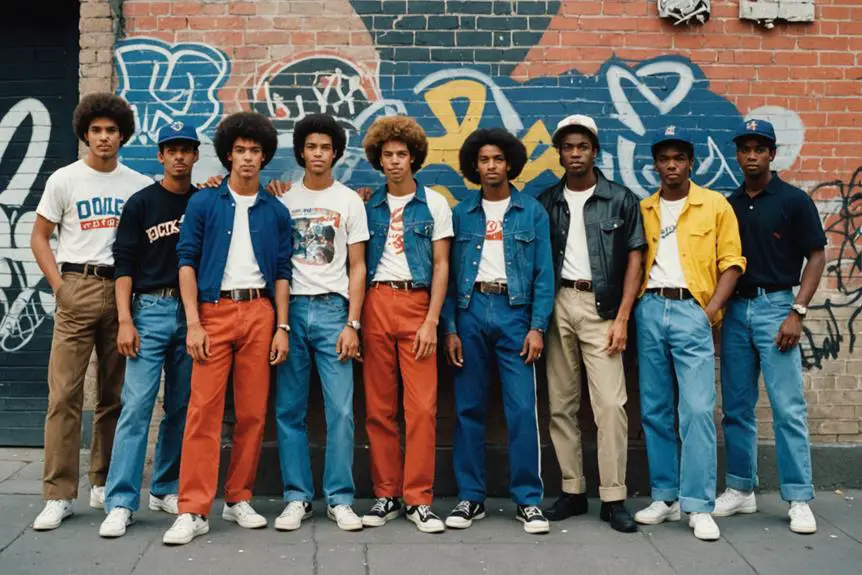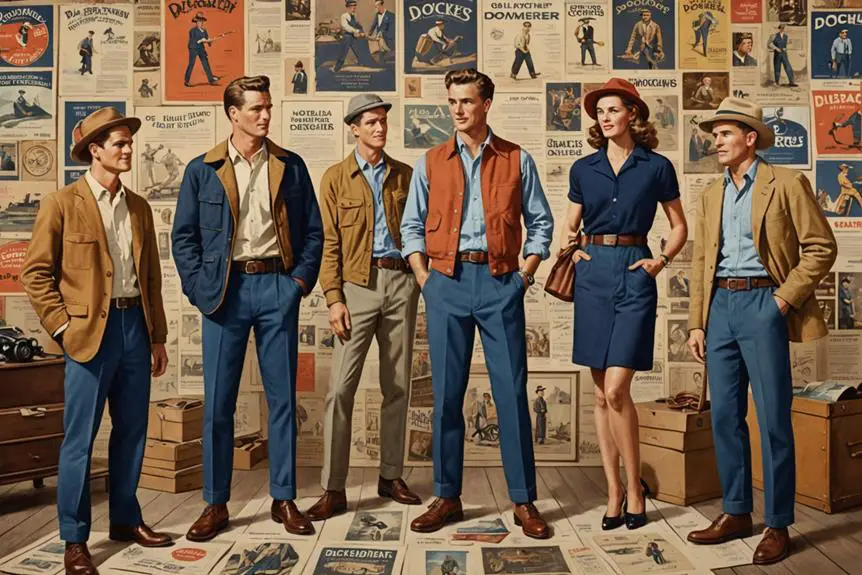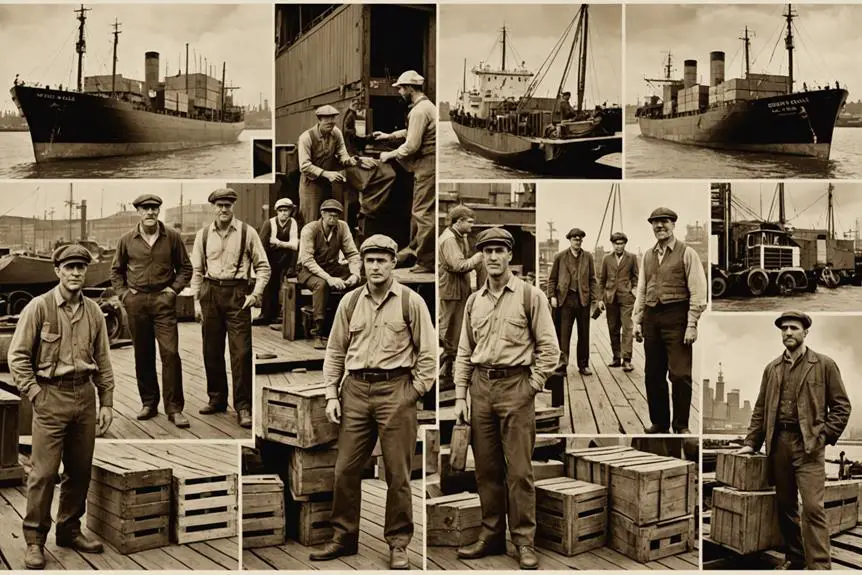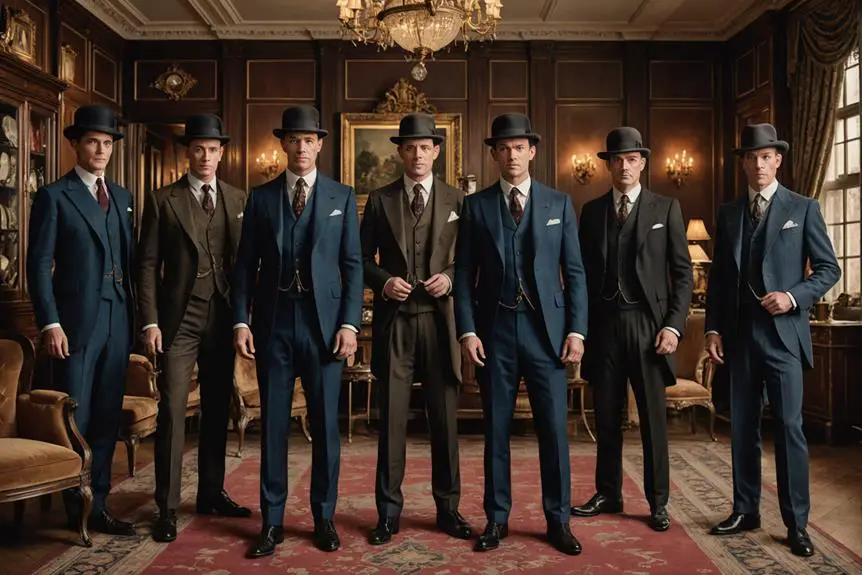The history of Dockers highlights its evolution from the military roots of khaki to a staple in contemporary fashion. Since its launch in 1986, Dockers has played a crucial role in popularizing khaki pants, leading to impressive sales growth. The 1992 Casual Fridays initiative transformed corporate dress codes, establishing khakis as an essential element of professional attire. As the brand evolved, Dockers significantly influenced workplace fashion, making appearances in pop culture, and introducing innovations such as stretch fabrics for enhanced comfort. Through targeted marketing and a commitment to sustainability, Dockers has adapted to shifting trends and consumer preferences. Exploring these dynamics provides valuable insight into Dockers' lasting cultural significance and its current status in the fashion world.
Origins of Khaki

How did khaki evolve into a staple of modern fashion? Khaki's origins trace back to the mid-19th century when British Indian Army officers began dyeing their white uniforms with local mud to create a lightweight, breathable fabric. This innovation, credited to Sir Harry Burnett Lumsden, resulted in the beige-colored fabric we now know as khaki. By World War I, khaki had shifted from military necessity to a symbol of uniformity, becoming the official attire for the US Army. The fabric's versatility caught the attention of fashion designers, leading Levi Strauss & Co. to introduce khaki pants in 1905, aligning with the evolving fashion landscape of the time, including the rise of sportswear brands like Adidas that embraced practical styles. As the cultural impact of Adidas grew, it influenced various fashion trends, including the casual styles that incorporated khaki.
The end of World War II marked a pivotal moment for khaki; returning soldiers repurposed their military trousers for civilian life, driving the material's popularity. As a result, khaki pants, often associated with brands like Dockers, became a cornerstone of casual men's fashion, representing a blend of practicality and style that continues to resonate today.
Evolution of Dockers
What factors contributed to the remarkable rise of the Dockers brand since its inception in 1986? One significant element was the introduction of khaki pants, which quickly captured the attention of consumers. In its first year, Dockers achieved $1 million in wholesale volume, showcasing its potential. By 1992, the brand transformed corporate America with its Casual Fridays marketing campaign, which encouraged a more relaxed dress code at work. This initiative not only popularized Dockers but also established khaki pants as a staple in many wardrobes.
Cultural Impact

Since the launch of its Casual Fridays campaign in 1992, Dockers has considerably influenced workplace attire and broader cultural norms. By promoting khakis as acceptable professional wear, Dockers became synonymous with a change toward relaxed corporate dress codes. This alteration wasn't just about comfort; it reflected evolving attitudes about professionalism, allowing employees to express individuality while maintaining a polished appearance. The brand's history and evolution, evident in its vintage tags as authenticity indicators, further emphasize its enduring legacy in fashion.
The brand's penetration into mainstream culture became evident when "Seinfeld" featured an episode referencing Dockers, showcasing its relevance in popular media. The 1995 "Nice Pants" TV campaign further solidified Dockers' image, linking the brand to humor and everyday life.
In 2011, Dockers' Alpha Khaki became a bestseller at Urban Outfitters, indicating its strong influence on contemporary youth fashion. This trend points to a broader acceptance of khakis among younger generations, a reflection of the brand's lasting impact.
Additionally, Dockers' 2014 Well Thread line highlighted environmental sustainability, aligning with consumer demand for responsible fashion choices. This evolution illustrates how Dockers not only shaped personal style but also responded to cultural shifts, much like Teddy Roosevelt did in his era by promoting progressive ideals.
Fashion Innovations
Dockers has consistently pushed the boundaries of innovation in men's fashion, particularly with its introduction of the first Stretch khaki pants in 2000. This pioneering product enhanced comfort and flexibility, meeting the growing demand for versatile clothing that fits modern lifestyles. As fashion innovations evolved, Dockers recognized the need to appeal to younger consumers. In 2010, the "Wear The Pants" campaign debuted during the Super Bowl, presenting new styles that offered a contemporary take on masculinity.
Collaboration with designer Steven Alan that same year led to the premium K-1 Khaki collection, merging contemporary design with classic functionality. The launch of the Alpha Khaki in 2011 further showcased Dockers' adaptability, as it became a bestseller at Urban Outfitters, reflecting the brand's responsiveness to current fashion trends.
In 2014, Dockers took a significant step towards environmental sustainability with the Well Thread line. This initiative emphasized eco-friendly manufacturing processes and the use of sustainable materials, setting a new standard in the industry. Through these strategic fashion innovations, Dockers not only maintained its relevance but also contributed positively to the environment, demonstrating a commitment to responsible fashion.
Market Strategy

The brand's market strategy has evolved markedly over the years, reflecting its responsiveness to changing consumer preferences and societal trends. In 1992, Dockers strategically targeted human resources departments to promote casual attire in the workplace, effectively launching the "Casual Fridays" concept. This initiative not only positioned Dockers as a go-to brand for khaki pants but also reshaped office culture, encouraging a more relaxed dress code.
In 1993, the brand reinforced its heritage by showcasing vintage Levi's khakis, emphasizing product longevity and connection to its roots. The significant corporate rebranding in 2009 with the "Wear the Pants" campaign aimed to reclaim masculinity and strengthen the brand's identity among men, appealing to traditional values while modernizing its image.
To engage younger demographics, Dockers introduced collegiate programs in 2013, fostering brand loyalty among students. The launch of the Well Thread line in 2014 marked a crucial shift towards sustainable practices, aligning Dockers with eco-conscious consumer trends. This multifaceted approach guarantees that Dockers remains relevant and appealing, adapting to both societal expectations and consumer demands while maintaining its core identity.
Frequently Asked Questions
Is Dockers Still Owned by Levi's?
Yes, Dockers is still owned by Levi Strauss & Co. The brand continues to thrive under Levi's management, adapting to fashion trends while maintaining its core identity and contributing considerably to the company's overall revenue.
What Is the Meaning of the Dockers Logo?
The Dockers logo symbolizes reliability and authenticity through its dock worker silhouette. It reflects the brand's commitment to quality, casual durability, and straightforward design, appealing to those seeking functional yet stylish everyday clothing options.
Is Docker a Good Brand?
Yes, Dockers is a good brand. You'll find quality craftsmanship, innovative comfort technologies, and a wide variety of styles that cater to diverse tastes. Their commitment to sustainability further enhances their appeal in today's market.
What Is the Origin of Khaki Pants?
Khaki pants originated in the mid-19th century when British soldiers dyed their uniforms with mud for practicality in hot climates. The term "khaki" means dust in Urdu, symbolizing their functional, military roots.




